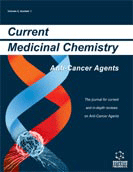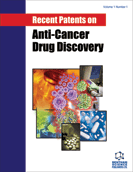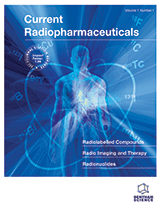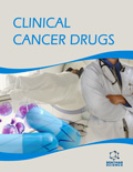Abstract
The treatment of advanced non-small-cell lung cancer (NSCLC is based on the combination of platin and one of the following agents: taxanes, gemcitabine, vinorelbine or irinotecan. There are no significant differences in efficacy among these combinations suggesting that the maximum efficacy has been reached. In this review, we will consider the mechanisms of chemoresistance of the five groups of cytotoxic drugs commonly used in the treatment of advanced NSCLC as well as the clinical studies which have assessed the value of chemoresistance markers. Breast Cancer Related Protein (BRCP) expression has been related to irinotecan and cisplatin (CDDP) resistance. DNA repair capacity influences response to CDDP and ERCC1 gene stands out as a predictive marker of CDDP sensitivity. Preliminary studies indicate that high tubulin III and stathmin mRNA levels correlate with response to paclitaxel and vinorelbine and that high expression of class III tubulin by tumor cells assessed immunohistochemically in patients receiving a taxane-based regimen is associated with a poor response to chemotherapy, and a shorter progression-free survival. High expression levels of ribonucleotide reductase has also been related to response to gemcitabine. Uridine diphosphate glucuronosyltransferase isoform 1A1 (UGT1A1) genotype has been reported to be associated with time to progression and survival in patients treated with irinotecan. These data suggest that pharmacogenomic strategies may be used for developing customized chemotherapy in prospective studies. Adjuvant chemotherapy which had recently shown its usefulness in limited lung cancer represents another area of investigation for pharmacogenomic studies.
Keywords: cis-platin, drug resistance, gemcitabine, irinotecan, non-small-cell lung cancer, pharmacogenomics
Current Medicinal Chemistry - Anti-Cancer Agents
Title: Chemoresistance in Non-Small Cell Lung Cancer
Volume: 5 Issue: 1
Author(s): Pascal Seve and Charles Dumontet
Affiliation:
Keywords: cis-platin, drug resistance, gemcitabine, irinotecan, non-small-cell lung cancer, pharmacogenomics
Abstract: The treatment of advanced non-small-cell lung cancer (NSCLC is based on the combination of platin and one of the following agents: taxanes, gemcitabine, vinorelbine or irinotecan. There are no significant differences in efficacy among these combinations suggesting that the maximum efficacy has been reached. In this review, we will consider the mechanisms of chemoresistance of the five groups of cytotoxic drugs commonly used in the treatment of advanced NSCLC as well as the clinical studies which have assessed the value of chemoresistance markers. Breast Cancer Related Protein (BRCP) expression has been related to irinotecan and cisplatin (CDDP) resistance. DNA repair capacity influences response to CDDP and ERCC1 gene stands out as a predictive marker of CDDP sensitivity. Preliminary studies indicate that high tubulin III and stathmin mRNA levels correlate with response to paclitaxel and vinorelbine and that high expression of class III tubulin by tumor cells assessed immunohistochemically in patients receiving a taxane-based regimen is associated with a poor response to chemotherapy, and a shorter progression-free survival. High expression levels of ribonucleotide reductase has also been related to response to gemcitabine. Uridine diphosphate glucuronosyltransferase isoform 1A1 (UGT1A1) genotype has been reported to be associated with time to progression and survival in patients treated with irinotecan. These data suggest that pharmacogenomic strategies may be used for developing customized chemotherapy in prospective studies. Adjuvant chemotherapy which had recently shown its usefulness in limited lung cancer represents another area of investigation for pharmacogenomic studies.
Export Options
About this article
Cite this article as:
Seve Pascal and Dumontet Charles, Chemoresistance in Non-Small Cell Lung Cancer, Current Medicinal Chemistry - Anti-Cancer Agents 2005; 5 (1) . https://dx.doi.org/10.2174/1568011053352604
| DOI https://dx.doi.org/10.2174/1568011053352604 |
Print ISSN 1568-0118 |
| Publisher Name Bentham Science Publisher |
Online ISSN 1875-5968 |
 25
25Related Articles
-
Inhibitory Effect of Fruit Juices on the Doxorubicin Metabolizing Activity of Carbonyl Reductase 1
Drug Metabolism Letters Docking and Virtual Screening to Identify PKC Agonists: Potentials in Anticancer Therapeutics
Current Computer-Aided Drug Design Synthesis and Screening of Pro-apoptotic and Angio-inhibitory Activity of Novel Benzisoxazole Derivatives both In Vitro and In Vivo
Anti-Cancer Agents in Medicinal Chemistry Needle in a Haystack: Targeting Specific Glucuronidases Amid the Human Microbiome
Current Enzyme Inhibition Editorial [Hot Topic: Inflammation as Target for Pharmaceutical Intervention in Cancer (Executive Editors: R.M. Schiffelers and K.E. de Visser)]
Current Pharmaceutical Design An Update on Disease Modifying Antirheumatic Drugs
Inflammation & Allergy - Drug Targets (Discontinued) Chemoprevention of Lung Pathologies by Dietary n-3 Polyunsaturated Fatty Acids
Current Medicinal Chemistry Annexins in the Central Nervous System: Are they Neuroprotective or Proapoptotic Agents?
Medicinal Chemistry Reviews - Online (Discontinued) Acid-extrusion from Tissue: The Interplay Between Membrane Transporters and pH Buffers
Current Pharmaceutical Design Experimental Validation of an Assembly of Optimized Curved Rectangular Coils for the Use in Dynamic Field Free Line Magnetic Particle Imaging
Current Medical Imaging Synthesis and Biological Activities of Organotin(IV) Complexes as Antitumoral and Antimicrobial Agents. A Review
Mini-Reviews in Medicinal Chemistry Arachidonic Acid Induces the Migration of MDA-MB-231 Cells by Activating Raft-associated Leukotriene B4 Receptors
Clinical Cancer Drugs The Roles of Chromatin Remodeling Proteins in Cancer
Current Protein & Peptide Science The Ecstacy of Gold: Patent Expirations for Trastuzumab, Bevacizumab, Rituximab, and Cetuximab
Recent Patents on Biotechnology Current Applications of Artificial Neural Networks in Biochemistry with Emphasis on Cancer Research
Current Biochemical Engineering (Discontinued) Volatile Disease Biomarkers in Breath: A Critique
Current Pharmaceutical Biotechnology Transcriptome Analysis of mRNA in Uterine Leiomyoma Using Next-generation RNA Sequencing
Anti-Cancer Agents in Medicinal Chemistry Microbial Metabolomics
Current Genomics The Association of Chemotherapy and Radiotherapy: Breast Cancer
Current Drug Therapy Targeting Tumor Angiogenesis in Gastrointestinal Malignancies
Current Angiogenesis (Discontinued)


















